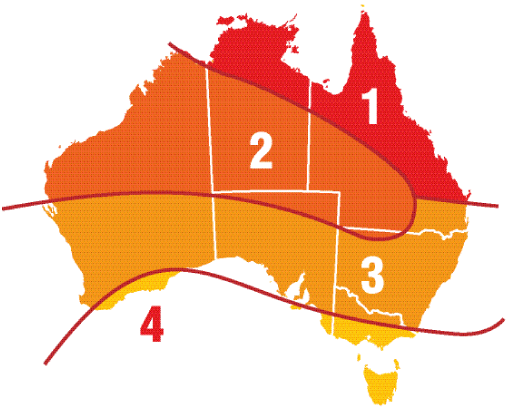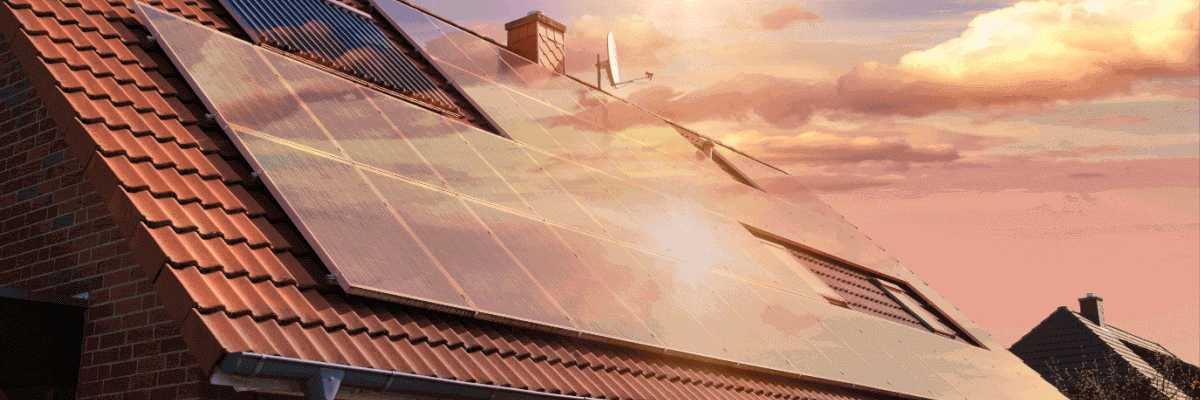KEY POINTS
- Solar rebates are a government-backed financial initiative designed to reward individuals and businesses for generating their own energy through solar power.
- Solar rebates function as a discount scheme for households that install a renewable energy system, or a sustainably powered hot water system.
- There are two national government solar rebate initiatives available in Australia: the Small-scale Renewable Energy Scheme and solar feed-in tariffs (FiTs).
In this article, Canstar Blue explains the solar rebates currently available to Australian households.
On this page:
- What is a solar rebate?
- How does a solar rebate work?
- What are the government solar rebate initiatives available in Australia?
- State-by-state solar rebates
- Solar rebates in NSW
- Solar rebates in VIC
- Solar rebates in QLD
- Solar rebates in SA
- Solar rebates in WA
- Solar rebates in TAS
- Solar rebates in NT
- Solar rebates in ACT
- How do I sign up to a solar rebate?
- Solar plans in Australia
- Is it worth getting a solar rebate?
Advertisement
What is a solar rebate?
Solar rebates are government-backed financial initiatives designed to reward individuals and businesses for generating their own energy through solar power.
Initially introduced to encourage the adoption of solar panels, these rebates help offset the substantial upfront costs, which can be a barrier for many potential buyers. By reducing the financial burden, these rebates make solar systems more accessible to homeowners and promote the expansion of solar energy across Australia’s electricity grid.
Although the size and scope of rebates have decreased over time, there are still several incentives available for households and businesses looking to invest in solar power.
How does a solar rebate work?
In Australia, solar rebates function as a discount scheme for households that install a renewable energy system or a sustainably powered hot water system.
While technically more of a financial incentive than a rebate, this system operates similarly to a voucher system. Homeowners receive a certain number of vouchers based on the size of their system and the geographical location of their home.
These vouchers can be exchanged or sold to reduce the upfront cost of their solar system installation. This initiative is known as the Small-scale Renewable Energy Scheme (SRES).
What are the government solar rebate initiatives available in Australia?
There are currently two national government solar rebate initiatives available in Australia: the Small-scale Renewable Energy Scheme (SRES) and solar feed-in tariffs (FiTs).
Starting from 1 July 2025, the Cheaper Home Batteries Program, initiated by the Labor Government, will begin rolling out.
The rebates and concessions on this page have terms and conditions. for more information, check out each government body’s website.
Cheaper Home Batteries Program
Eligible households can receive a solar rebate of up to $372 per usable kWh of battery storage, with fees and charges decreasing the actual battery price reduction. Solar Quotes suggests that the Federal Government’s incentive could lower solar battery installation costs by as much as $3,300 for 10kWh systems.
Small-scale Renewable Energy Scheme
The biggest solar panel incentive offered by the government is the Small-scale Renewable Energy Scheme. Under this scheme, customers who install an eligible small-scale renewable energy system, such as rooftop solar panel systems under 100 kilowatt hours (kWh), can earn what is known as a small-scale technology certificate (STCs).
What are STCs?
STCs are calculated based on the amount of renewable energy the system will generate. Generally, these certificates are sold on a customer’s behalf by their accredited solar installer to recoup a portion of the overall installation costs.
Customers can also sell these certificates themselves through an open market or through what is known as the ‘STC clearing house’. However, it should be noted that both of these options can take up to 12 months to come to fruition.

Image Source: Solar Choice
The value of the STC will vary depending on the amount of solar radiation in the area where you install your solar.
As shown on the map pictured above, climate zones for STCs are broken up into four regions, with Zone 1 enjoying the highest STC value and the rest in descending order of value.
It is important to note that while this is a government-run scheme, it doesn’t play any part in setting the price of these certificates, nor does it pay back the money earned from STCs to consumers.
For more information on small-scale energy certificates, it’s recommended to visit the Clean Energy Regulator’s website.
Solar Feed-in tariffs (FiTs)
The second major incentive (although perhaps more of a subsidy) is the government’s solar feed-in tariffs. This is a small rebate of a few cents for each kilowatt hour (kWh) of unused electricity generated by your solar system that is exported into the electricity grid.
Some states have mandated minimum FiT rates, but generally, retailers are free to set their own rates as long as they meet these minimums. Since FiTs are governed by state policies, rates vary depending on where you live. For a full list of solar FiTs in Australia, visit the Canstar Blue best solar feed-in tariffs page, or explore our state-based pages below.
Household Energy Upgrades Fund
Although it’s not a rebate, Australians looking to upgrade the energy efficiency of their home may have access to discounted finance products from participating lenders. This includes solar PV systems, batteries and inverters, solar hot water and energy-efficient appliances.
The Household Energy Upgrades Fund is available to homeowners, rental property owners, and strata properties, although eligibility requirements apply. More information is available at the Clean Energy Finance Corporation’s website.
State-by-state solar rebates
There are further rebates for sustainable electricity use that aren’t limited to solar. Different states offer incentives for things such as energy-efficient appliances, running your pool filter at off-peak times, efficient air conditioning systems and many more – all can be found on the government’s energy savings website.
Solar rebates in NSW
Despite NSW’s original Solar Bonus Scheme ending in December 2016 and its Rebate Swap for Solar ending in 2024, the state still offers some financial incentives to households who contribute to renewable energy generation, in addition to FiTs.
Solar for apartment residents
Eligible owners corporations of apartment buildings and other multi-unit dwellings in NSW can apply for a grant to fund 50% of the cost of a shared solar PV system. Applications close on 1 December 2025, unless funds are fully allocated earlier.
Battery and VPP rebates
NSW solar customers can claim a discount for batteries and Virtual Power Plants (VPP) from accredited installers and suppliers.
Current battery and VPP schemes include:
Battery installation incentives
According to the NSW Government website, customers installing a new solar battery from an accredited supplier can claim a discount based on the usable capacity of their battery. More information is available from solar installers in your area.
Virtual Power Plant incentives
Eligible customers with solar batteries can earn a rebate in NSW when joining a VPP with an Accredited Certificate Supplier (ACP).
Rebates are available from $120 to $190 for a 6.5 kWh battery, and $250 to $400 for a 13.5 kWh battery, and can be claimed twice with at least three years in between claims.
Accredited suppliers include Creditex, EC Focus, Ecovantage, Electric Future Sustainability Services and MAC Trade Services.
Smart Distributed Batteries Project
The Small Distributed Batteries Project has now concluded. Eligible customers in selected council areas could claim a discount on a Tesla Powerwall 2 when joining a VPP. Participating councils included Shoalhaven City, Eurobodalla Shire, Bega Valley Shire, Queanbeyan-Palerange, Yass Valley, Snowy Monaro and Goulburn Mulwaree.
Solar rebates in VIC
Victoria solar customers also have a selection of solar rebates available to households, the most notable ones being the Solar PV Panel Rebate, Solar Battery Loan and Solar Hot Water Rebate. Solar FiTs in Victoria are also regulated by the government, with providers required to offer a minimum tariff.
Solar PV panel rebate
The solar panel (PV) rebate in Victoria is a program that offers a rebate of $1,400 on the installation of solar PV panels for homeowners and rental properties. An interest-free loan equivalent to their rebate amount is also available to Victorians through this program. This loan however, must be paid off within four years.
Solar battery interest-free loan
The VIC Government also offers an interest-free loan up to $8,800 on the installation of a solar battery for eligible houses. Households have four years to pay off this loan.
Solar rebate for rental properties
Eligible rental providers can apply for a VIC Government solar rebate of up to $1,400 on a maximum of two rental properties per year, to help cover the cost of installing a solar panel system.
Solar hot water rebate
There is also a VIC Government solar rebate of up to $1,000 available to Victorian residents who wish to install a solar hot water or heat pump hot water system on their property.
Solar rebates in QLD
Unlike other states, there isn’t a solar rebate offered in QLD, though residents can benefit from STCs and FiTs.
Since there is no set government rate for electricity sent back to the grid, retailers offer competitive, market-based rates.
This makes it important to shop around for the best deal because SEQ residents will likely receive a market-set FiT. For regional Queenslanders, a regional FiT is largely available.
It’s important to note that the Solar Bonus Scheme FiT is no longer available to new customers. Customers already on the Bonus Scheme will receive a 44c/kWh FiT until 1 July 2028.
Solar rebates in SA
South Australia has a number of solar FiTs, specialty solar programs and VPP programs in the state, along with the federal government initiatives.
Energy storage
The City of Adelaide is offering an energy storage (e.g. solar batteries) rebate of up to 50% (maximum $2,000) of the installed system cost.
Solar PV
The City of Adelaide is also offering a rebate of 20% of the cost of installed 1.5kW – 10kW solar systems (maximum $1,000).
Eligible PV solar systems of 10kW – 20kW are also able to apply for the 20% rebate, up to a maximum of $2,500.
Eligible PV solar systems of more than 20kW can receive the same 20%, up to a maximum of $5,000.
Solar rebates in WA
The Western Australia Government doesn’t currently offer any additional solar rebates to homeowners outside of those offered nationally.
It does, however, run a time of export buyback scheme for those that own solar panels, batteries or an electric vehicle. This scheme is known as the Distributed Energy Buyback Scheme (DEBS) and financially rewards consumers for sending energy back to the grid during peak and off-peak times.
The buyback rate varies for Synergy and Horizon Power customers, but generally households in WA can expect to earn around 10c/kWh at peak times and around 2c/kWh – 3c/kWh at off-peak times for sending renewable energy back into the grid.
WA Residential Battery Scheme
According to the Western Australian Government, from 1 July 2025, 20,000 rebates will be available to Synergy customers with residential batteries of up to $5,000. Horizon Power customers can receive up to $7,500 with the size of the battery to still be determined.
Solar rebates in TAS
Tasmania currently has limited solar rebates, however, solar customers can access the STC initiative.
Tasmanians also have access to a solar FiT of between 8.88-10c/kWh offered from the four energy retailers currently available.
Solar rebates in NT
The Northern Territory offers a solar battery install rebate program. The Home and Business Battery Scheme provides homeowners, businesses and not-for-profit organisations in the NT with a rebate of $400 per kWh of usable battery capacity, up to a maximum grant of $12,000.
To be eligible for this rebate, you must be a home or business owner in the NT. If you own both a home and business, you can apply for this rebate for both.
This is a solar battery rebate and the concession can’t be used to purchase a solar panel system alone. The chosen solar battery must also be listed on the NT Government’s list of approved batteries.
Solar rebates in the ACT
The ACT Government is offering one interest-free loan option and one solar rebate program available to households: the Sustainable Household Scheme and Home Energy Support Program.
Sustainable Household Scheme
With the Sustainable Household Scheme, eligible homeowners in the ACT can borrow between $2,000-$15,000 as part of an interest-free loan to go towards energy-efficient upgrades in the home.
Some of the eligible products to be purchased under this program include:
- Rooftop solar panels
- Household battery storage systems
- Electric heating and cooling systems
- Hot water heat pumps
- Electric stove tops
- Electric vehicles (EVs) and charging infrastructure.
Residents can purchase one or more of the following products under this program so long as the total expenditure is under $15,000. Residents have 10 years to repay their interest-free loan.
Home Energy Support Program
The Home Energy Support Program allows eligible concession holders to receive 50% of the total cost – up to $5,000 in rebates for energy-efficient upgrades in the home, including rooftop solar.
Residents can access up to $2,500 to help with the installation of solar panels, with a further $2,500 available if they also install reverse cycle heating and cooling, hot water heat pumps or ceiling insulation. Eligible applicants can combine the rebate with a zero-interest loan of up to $10,000 to help cover the remaining costs.
How do I sign-up to a solar rebate?
To receive STCs, you will need to have a discussion with your solar installer prior to the installation process to determine the costs and number of certificates applicable in your circumstances.
Some states and territories also run specific rebate schemes for households that purchase and install certain renewable energy technologies, such as solar batteries or solar hot water systems. To apply for these, you’ll need to go through your state government’s website.
As for solar FiTs, these are applied once connected to the electricity grid, but you can get access to a higher tariff by comparing plans from different electricity providers. While some electricity plans have a higher FiT, they could include higher usage costs for general electricity. So, be careful to always read the fine print.
Solar plans in Australia
Here are some solar-specific energy plans currently available in Australia.
Here are some of the cheapest solar-specific deals from the retailers on our database. These costs are based on the Ausgrid network in Sydney but prices will vary depending on your circumstances. We show one product per retailer, listed in order of lowest price first. Annual price estimates assume general energy usage of 3900kWh/year for a residential customer on a single rate tariff. Price estimates exclude solar feed-in tariff credits. These are products from referral partners†. Our database may not cover all deals in your area, and please check retailer websites for up to date information. Here are some of the cheapest solar-specific deals from the retailers on our database. These costs are based on the Citipower network in Melbourne but prices will vary depending on your circumstances. We show one product per retailer, listed in order of lowest price first. Annual price estimates assume general energy usage of 4000kWh/year for a residential customer on a single rate tariff. Price estimates exclude solar feed-in tariff credits. These are products from referral partners†. Our database may not cover all deals in your area, and please check retailer websites for up to date information. Here are some of the cheapest solar-specific deals from the retailers on our database. These costs are based on the Energex network in Brisbane but prices will vary depending on your circumstances. We show one product per retailer, listed in order of lowest price first. Annual price estimates assume general energy usage of 4600kWh/year for a residential customer on a single rate tariff. Price estimates exclude solar feed-in tariff credits. These are products from referral partners†. Our database may not cover all deals in your area, and please check retailer websites for up to date information. Here are some of the cheapest solar-specific deals from the retailers on our database. These costs are based on SA Power network in Adelaide but prices will vary depending on your circumstances. We show one product per retailer, listed in order of lowest price first. Annual price estimates assume general energy usage of 4000kWh/year for a residential customer on a single rate tariff. Price estimates exclude solar feed-in tariff credits. These are products from referral partners†. Our database may not cover all deals in your area, and please check retailer websites for up to date information.
Is it worth getting a solar rebate?
The variety of solar rebates on offer in each state and territory have dwindled in the past few years. But there are still some great solar rebates and buyback schemes open to most homes and businesses across Australia.
When you take into account the large financial investment required to buy a solar panel system or energy storage unit, any amount that you can get in return will probably be worth it.
If you’ve exhausted all your rebate options, your best bet for making a return on your investment will be ensuring that you are on an energy plan that offers a decent solar FiT.
Click the Canstar Blue link below to compare energy providers that are rated best for customers with solar panels.
Compare Best-Rated Solar Providers
Original reporting by Simon Downes
Image Source: alex.go_photography/Shutterstock.com




Share this article